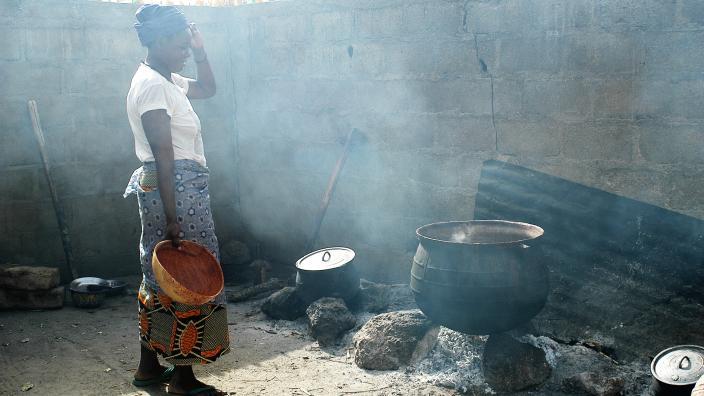Cattails and their “corndog” spikes are iconic along Minnesota’s lakeshores and wetlands. Throughout North American history, the plants were harvested for food, used medicinally and the long broad leaves were woven into mats and wigwam siding.
But around the mid-1970s a European cattail cousin was caught sneaking in. The invasive narrow-leaf cattail, Typha australis, is causing problems in Minnesota by outcompeting the well-behaved native, leaving a monoculture that is inhospitable to other plants, animals and birds.
Still, our problem is nothing compared to the urgent cattail invasion problems along the Senegal River in Africa. NRRI is working to develop a holistic solution to the Typha australis problem in the countries of Mauritania and Senegal along the river. And if the solutions work there, they will certainly benefit Minnesota.
First steps toward that goal were made in November as NRRI Associate Director Don Fosnacht went to Senegal with Peter Strzok, a retired U.S. Army Lt. Colonel who has travelled extensively throughout Africa. The solution they’re developing will remove the cattail, provide a low-pollutant cooking fuel and create much needed jobs. They hope that the domino effect will stabilize the vulnerable communities along the river and discourage tree harvesting for fuel in this already barren landscape.
“Invasive Typha is a nasty plant that is causing pervasive problems,” said Fosnacht. “We saw where a whole village had to move because they lost access to the river, they couldn’t fish and the mosquitoes got even worse. They had to get away."
Harvesting this plant isn’t easy. It grows densely, almost like a wall of tightly woven mass. And the mosquitoes thrive in the stagnant habitat. With the threat of malaria, that’s a real problem.
NRRI is currently scaling up a hydrothermal carbonization process that will convert moisture-filled biomass, such as the Typha, into something like mud. Once dried and formed into biocoal pucks, the fuel burns very efficiently with low environmental impact. NRRI will receive a delivery of Typha from Senegal to test the process with this plant.
Meanwhile, funds are sought to purchase an aquatic vegetation cutter to mechanically chop the plant into biomass that can be gathered using traditional African pirogues (long, low wooden canoes). A processing facility would be built to process and press the biomass into a coal-like fuel used in traditional African cooking fires. Fosnacht estimates that there is currently enough Typha to make biocoal for 15 – 20 years, and that if allowed to reproduce in a controlled space, would be sustainable into the foreseeable future.
“Typically, they make charcoal for fuel by chopping down trees, which is causing deforestation and expanding the desert,” Fosnacht explained. During his visit to Senegal, he witnessed production of charcoal with available rice hulls. While this facility is managing to produce on a small scale, Fosnacht saw that the NRRI process would be more efficient while also addressing the cattail problem.
“Our product has a much lower carbon content, but still high fuel value and is solid,” he said. “Their charcoal is very fragile and crumbly, on top of being inefficient.”
While managing the invasive cattails is critical, creating jobs is also important to the region. Senegal has a 13.4 percent unemployment rate, with rural village unemployment even higher. Fosnacht and Strzok have enlisted assistance from a Senegal farmer and a retired Senegalese army Colonel, both keen to find solutions. Crops are also affected by the spread of Typha Australis because it dams up water flow to agricultural fields and the airborne seeds kill flowering fruits.
Meetings with the African Development Bank’s Rural Development & Environmental Expert were met with enthusiasm. The Director of Environment and Sustainable Development at the Senegal River Basin Development Organization envisioned a large commercial program and encouraged proposals to be submitted.
